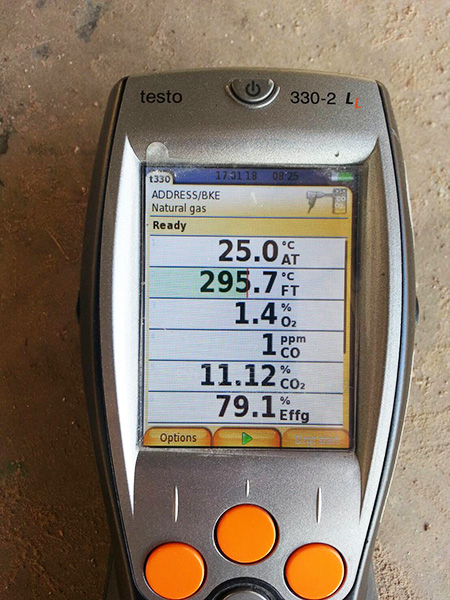
Why Perform Combustion Analysis?
Fuel Efficiency: The flue is often the largest source of lost fuel energy. Although some flue loss is unavoidable, an equipment tune-up using combustion analysis data can significantly reduce this source of heat loss and save fuel costs by improving fuel efficiency.
Reduce Emissions: Carbon monoxide, sulfur dioxide, nitrogen oxides and particles are undesirable emissions associated with burning fuels. These compounds are toxic, contribute to acid rain and smog and can ultimately cause respiratory problems. Combustion analysis is performed to monitor toxic and acid rain forming emissions in order to meet environmental regulations.
Improve Safety: Good equipment maintenance practices, which includes combustion analysis, enables technicians to fully verify and maintain the equipment operating specifications for safe and efficient operation. Changes to climate and air pressure can cause excess air in a system to fluctuate several percent. A reduction in excess air can cause a rapid increase of highly toxic carbon monoxide, resulting in reduced system safety and efficiency.
Combustion analysis involves the measurement of gas concentrations and temperatures for system tune-ups, emissions checks and safety improvements. Parameters that are commonly examined include: